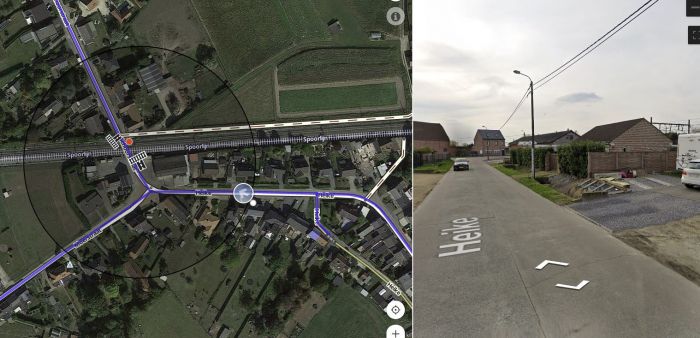
How it works
- Railroad crossing alert: When a railroad crossing is mapped as such in WME, users will receive an alert in the app.
- The component: To make this feature happen, we decided to reuse a component you are already familiar with. The flow in WME is based on the concept of the speed cams, just without the speed field.
- Adding a crossing: Railroad crossings can be added under Road > Railroad crossing and is displayed on a seperate layer. When adding crossings, you need to place alerts on both sides of the crossing pointing both towards the crossing.
- Permissions: For the initial launch we’ve asked for a global L4 lock that can later be configured per country & object.
Placement

Generally
Important: the location of the railroad crossing in the app is set by the RRC icon itself. The red dot is only a handle used for alignment. Therefore, make all functional decisions based on the RRC icon, not on the red dot.
Relative to the road
On one-way segments (including the sides of a divided road), the RRC icon should be placed more or less on top of the segment which actually crosses the railroad.
On two-way segments, the RRC icons should be offset slightly from the segment, on top of their respective lanes of traffic. Just make sure that the segment closest to the RRC icon is the one that actually crosses the railroad (important in tight areas—zoom in judiciously!).
When To Add
A RRC should be added to every segment that intersects a functional heavy gauge railroad line AND has a gate, sign, or other control device. This would include placement on AGCs (At-Grade Connector) that cross the railroad at a point relatively far away from the main road
Relative to the railroad
The icon should be made to touch the railroad “where the rubber meets the rail”—i.e., when the driver first hits the tracks with their wheels—at a tight zoom level (around 8). This is pretty straightforward at simple perpendicular crossings, but is important to consider when railroads cross roads at oblique angles.
Alignment


Icon and sound signal
Align the road part of the RRC icon with the road segment that intersects the railroad. Again, it is the road part that must be parallel with the road segment.
The railroad tracks part of the RRC icon should be pointed toward the front, relative to the direction of travel. If the RRC icon represents a car driving across the railroad, the railroad tracks represent the front of that car.
Use the red handle to rotate the RRC icon. Point the red dot in the direction of travel of the user
Icon and NO sound signal
Point the red dot at 90 ° perpendicular to the direction of travel
How to use in Belgium
With sound signal
- crossings without barriers
- Crossings with pour visability: whenever you can't see the crossing 100 metres in advance while driving
- Behind a bend
- Behind a hill
without sound signal
- All other crossings
